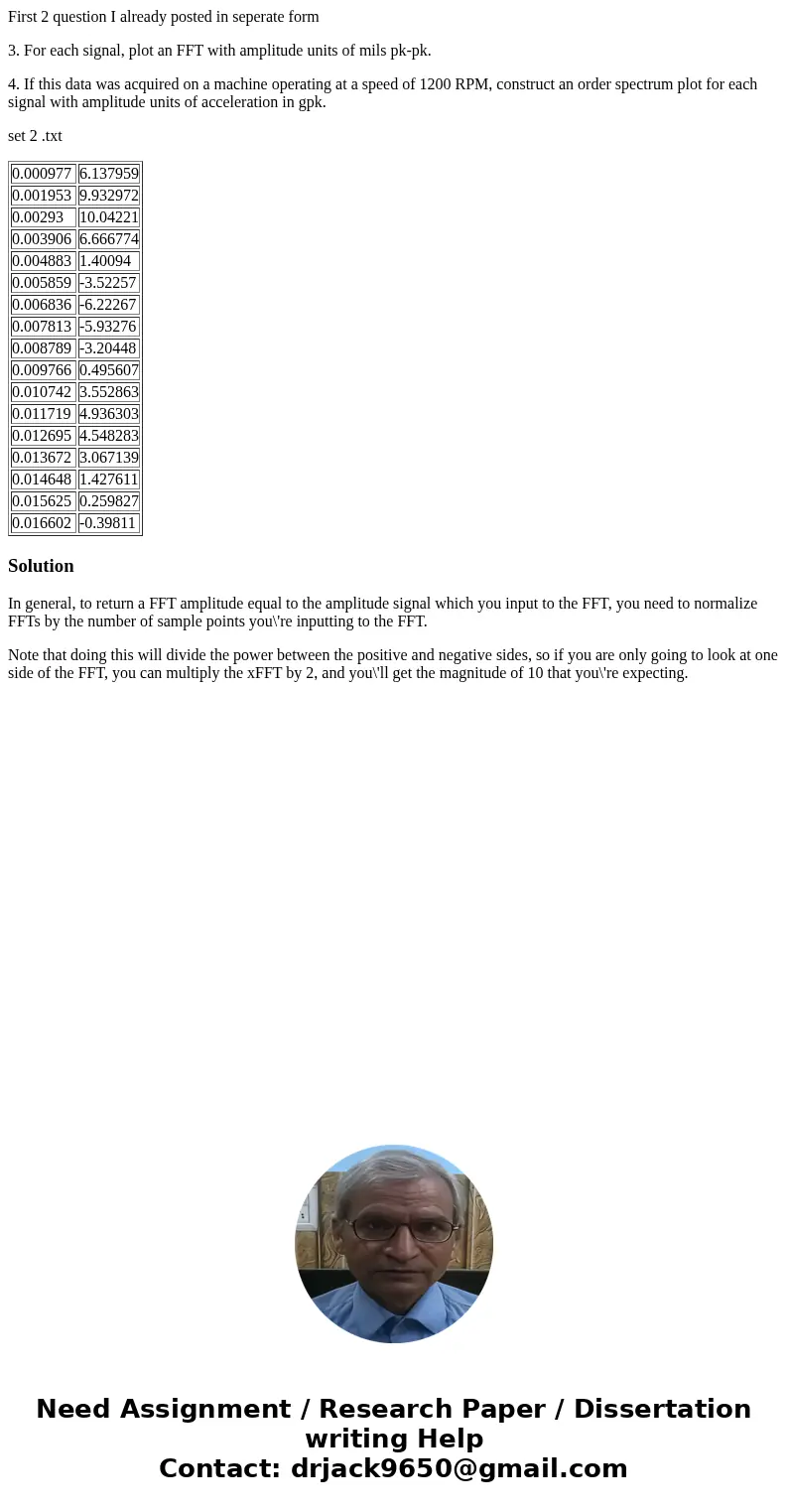First 2 question I already posted in seperate form 3 For eac
First 2 question I already posted in seperate form
3. For each signal, plot an FFT with amplitude units of mils pk-pk.
4. If this data was acquired on a machine operating at a speed of 1200 RPM, construct an order spectrum plot for each signal with amplitude units of acceleration in gpk.
set 2 .txt
| 0.000977 | 6.137959 |
| 0.001953 | 9.932972 |
| 0.00293 | 10.04221 |
| 0.003906 | 6.666774 |
| 0.004883 | 1.40094 |
| 0.005859 | -3.52257 |
| 0.006836 | -6.22267 |
| 0.007813 | -5.93276 |
| 0.008789 | -3.20448 |
| 0.009766 | 0.495607 |
| 0.010742 | 3.552863 |
| 0.011719 | 4.936303 |
| 0.012695 | 4.548283 |
| 0.013672 | 3.067139 |
| 0.014648 | 1.427611 |
| 0.015625 | 0.259827 |
| 0.016602 | -0.39811 |
Solution
In general, to return a FFT amplitude equal to the amplitude signal which you input to the FFT, you need to normalize FFTs by the number of sample points you\'re inputting to the FFT.
Note that doing this will divide the power between the positive and negative sides, so if you are only going to look at one side of the FFT, you can multiply the xFFT by 2, and you\'ll get the magnitude of 10 that you\'re expecting.

 Homework Sourse
Homework Sourse